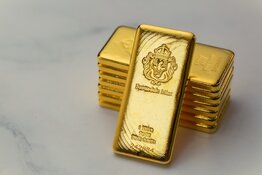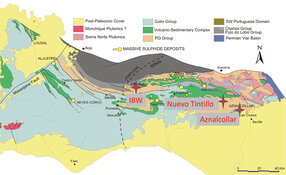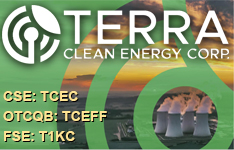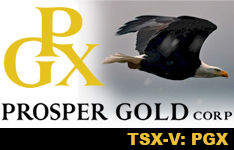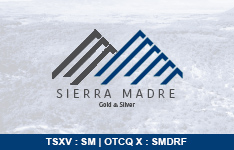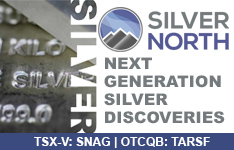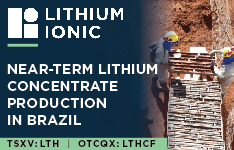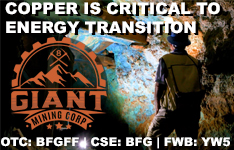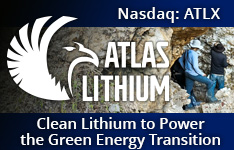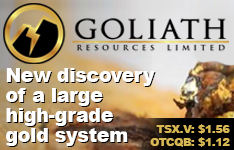Goliath Resources Ltd. (GOT:TSX.V; GOTRF:OTCQB; B4IF; FSE) confirmed it will file a new NI 43-101 technical report in May, consolidating exploration data from its Golddigger Property in British Columbia’s Golden Triangle. In a call with Streetwise Reports, CEO Roger Rosmus said the document will unify the company's drill results, sampling data, and geologic interpretations into a single source. “It’s going to be one document that has all of the drilling, all the sampling, everything about the property in one document,” Rosmus noted. He clarified that the filing is not a maiden resource estimate and emphasized that additional drilling is needed to support a compliant mineral resource. “We have no intention of a maiden resource at this particular juncture, probably not for at least a couple of years,” he added, citing the need for more pierce points to define the system's true scale.
The Surebet Zone, Goliath’s flagship discovery, has yielded consistent mineralization over a 1.8-square-kilometer area, with all 2024 drill holes intercepting gold-bearing structures. Notable results included 34.52 grams per tonne (g/t) gold equivalent (AuEq) over 39 meters, with visible gold found in 92% of core samples. Gold recoveries reached 92.2%, including 48.8% free gold, extracted using gravity separation without cyanide. “We’re in what I’m calling a low-risk expansion phase,” Rosmus explained. “We’re just going to now go and kind of do some infill drilling this year, as well as expand on the known system, because we still don’t know how big it truly is.”
Rosmus described the discovery of gold-bearing feeder dykes as a turning point. Initially believed to be barren due to their Eocene age, the dykes are now interpreted as conduits for the gold system. “Where there’s a finger, there’s a hand, and where there’s a hand, there’s an arm and a body,” Rosmus said. According to the Colorado School of Mines, the geochronology of the dykes (52.0 ± 1.5 Ma) aligns closely with that of the surrounding mineralized shear zones (50.7 ± 1.0 Ma), supporting a syngenetic origin. Rosmus noted that 33 historical drill holes intersecting these dykes are being re-logged and assayed ahead of the 2025 field season, saying, “We re-logged 13 holes from 2021 to 2023 that were never touched last year—six of those actually have visible gold in them.”
Gold market volatility was also addressed. While Rosmus downplayed the immediate impact of spot prices on pre-resource explorers, he acknowledged the broader benefits. “The euphoria and excitement [around gold] brings the sector into the spotlight,” he said. “Gold is now making headlines in major U.S. newspapers, bringing it to the forefront where it had been kind of an orphan child for years.” He added that gold’s newfound visibility may benefit junior explorers indirectly, noting, “There’s still a pretty big disconnect between the price of gold and where the explorers are trading.”
Rosmus also touched on the metal composition of Goliath’s mineralized zones. “Typically, our gold equivalency is about 90% gold, 5% silver, and the rest is copper, lead, and zinc,” he said, reinforcing that gold remains the primary value driver at Surebet.
Gold Exploration and the Broader Precious Metals Market
The recent performance of the gold sector has underscored a major shift in market dynamics, with analysts and institutions identifying both structural and cyclical factors driving heightened valuations. In an April 21 update, technical analyst Clive Maund described the sector as entering a new phase of rapid price escalation. He stated, “Gold is in meltup mode due to an unprecedented confluence of economic and geopolitical factors,” referencing record overbought signals on the MACD indicator. Maund pointed to debt saturation, global power realignments, and weakening confidence in the U.S. dollar as catalysts for continued upside. He added that precious metals stocks “should soar,” and highlighted that the historically low silver-to-gold ratio suggests the current bull market remains in its early stages.
According to a report from Kitco published April 22, gold futures reached an intraday record of US$3,509.90 before retreating to US$3,392.00, maintaining gains of over 10% for the month. Kitco noted that gold’s strength came in spite of a surging U.S. dollar and equities rally, both of which typically dampen demand for non-yielding assets. Gary Wagner wrote that "despite establishing a new intraday record, gold futures failed to sustain yesterday's record closing price," though the metal still posted “exceptional performance” overall.
Reuters reported on April 22 that spot gold briefly hit US$3,500.05 per ounce before dipping 1.5% on comments from U.S. Treasury Secretary Scott Bessent, who suggested a potential thaw in U.S.-China trade tensions. While this softened gold temporarily, the broader context remains bullish. Reuters highlighted that “spot gold, up 29% so far this year, notched its 28th record high on Tuesday.” The report added that JPMorgan projected gold would exceed US$4,000 an ounce in 2026, citing ongoing recession risks, higher U.S. tariffs, and persistent trade tensions.
According to GoldFix on April 23, JPMorgan’s latest research confirmed that the bank expects gold to average US$3,675 per ounce by the fourth quarter of 2025, reaching US$4,000 by the second quarter of 2026. The report emphasized systemic risks and central bank demand as core drivers. “This is not just about inflation,” the report explained. “It’s about systemic uncertainty, capital mobility constraints, and an increasingly fragmented global financial system.” JPMorgan anticipated sustained net purchases of 710 tonnes per quarter from central banks and institutional investors, which it viewed as part of a longer-term reallocation of reserves.
Third-Party Analysts Highlight Expansion Potential and Undervalued Growth at Goliath Resources
According to a March 11 report by Red Cloud Securities, analyst Taylor Combaluzier provided a highly favorable assessment of Goliath Resources Ltd. following the release of final 2024 drill results from its 100%-controlled Golddigger property in British Columbia’s Golden Triangle. Combaluzier stated, “We view the results positively as they continue to demonstrate continuity of high grades at known zones and confirmed Au mineralization at new targets.” The report noted that Goliath drilled 38,125 meters in 2024 and significantly expanded gold mineralization, with potential for continued expansion through a major drill program in 2025.
The analyst also highlighted the company’s ability to define a mineral inventory of approximately 4.0 to 6.0 million ounces of gold equivalent (AuEq) at an average grade of 6.62 g/t AuEq at the Surebet and Bonanza Zones, based on comprehensive data modeling and updated intercept analysis. Based on these findings, Red Cloud increased its target price for Goliath to C$2.90 per share, up from C$1.60, and maintained a “BUY (Speculative)” rating. The report cited a probability-weighted valuation methodology to derive this target, noting the base case scenario of 5.0 million ounces AuEq was considered the most likely outcome.
According to the valuation analysis, Red Cloud assumed an in-situ value of US$50 per ounce AuEq and used an 8% discount rate. The firm emphasized that “Goliath trades at a discount at an EV at CA$245.4M vs. peers at CA$378.7M – additional positive results could help close the gap.” Red Cloud also acknowledged the significance of recent strategic investments, viewing these developments as “an important endorsement for the company.”
The report concluded that Goliath’s results support further resource growth and valuation upside, with upcoming 2025 exploration plans likely to act as additional catalysts.
Goliath Catalysts: "Layered Gold System Positioned for Expansion"
Goliath’s 2025 plans center on expanding its reduced intrusion-related gold system (RIRG) model, as outlined in its April 2025 investor presentation. The company will relog and sample 33 historical drill holes intersecting porphyritic feeder dykes. These intervals, representing roughly 1,200 meters of core, are expected to generate early assays by June. Six of the 13 previously re-logged holes already revealed visible gold.
Mobilization for the summer drill program is scheduled for May, with three rigs planned to begin turning by the second week of June. Initial targets will step out from the 2024 discovery hole GD-24-260, which returned 34.52 g/t AuEq over 39 meters, including 132.93 g/t AuEq over 10 meters. Colorado School of Mines researchers described this intersection as containing both high-temperature and low-temperature gold, indicating potential proximity to a heat source.
Goliath also confirmed expanded land holdings, growing its property package by 28% to 91,518 hectares. This strategic increase was designed to capture additional RIRG-style targets, including the newly identified Blue Origin zone, which lies 4.5 kilometers south of Surebet. Blue Origin shares similar mineral characteristics and structural setting.
The technical team’s work continues in collaboration with partners such as Archer Cathro, SRK Consulting, and Colorado School of Mines. According to Rosmus, these efforts aim to define the full scope of the system before initiating a resource estimate, likely still a few years away.
Goliath remains fully funded for its 2025 program, with US$4.4 million in in-the-money warrants and a fully diluted market cap of approximately US$134 million as of April. A 150-million-share count and the support of strategic shareholders, including McEwen Mining and Crescat Capital, position the company for continued exploration momentum in a rising gold price environment.
Ownership and Share Structure
 Streetwise Ownership Overview*
Streetwise Ownership Overview*
Goliath Resources Ltd. (GOT:TSX.V; GOTRF:OTCQB; B4IF;FSE)
According to company data, 19.0% of Goliath Resources is held by Management and Insiders. Strategic and Institutional investors collectively own 9.9%, with notable holdings including Crescat Capital LLC at 14.4%, Mr. Rob McEwen at 3.9%, Global Commodity Group (Singapore) at 3.5%, Mr. Eric Sprott at 3.0%, and Mr. Larry Childress at 1.0%. The remaining shares are held by retail investors.
Goliath has 136,120,269 shares issued and outstanding. The 52-week range of Goliath is CA$0.76 to $2.87.
| Want to be the first to know about interesting Gold investment ideas? Sign up to receive the FREE Streetwise Reports' newsletter. | Subscribe |
Important Disclosures:
- Goliath Resources Ltd. is a billboard sponsor of Streetwise Reports and pays SWR a monthly sponsorship fee between US$4,000 and US$5,000.
- James Guttman wrote this article for Streetwise Reports LLC and provides services to Streetwise Reports as an employee.
- This article does not constitute investment advice and is not a solicitation for any investment. Streetwise Reports does not render general or specific investment advice and the information on Streetwise Reports should not be considered a recommendation to buy or sell any security. Each reader is encouraged to consult with his or her personal financial adviser and perform their own comprehensive investment research. By opening this page, each reader accepts and agrees to Streetwise Reports' terms of use and full legal disclaimer. Streetwise Reports does not endorse or recommend the business, products, services or securities of any company.
For additional disclosures, please click here.





